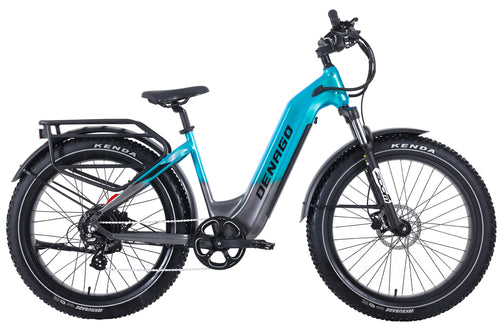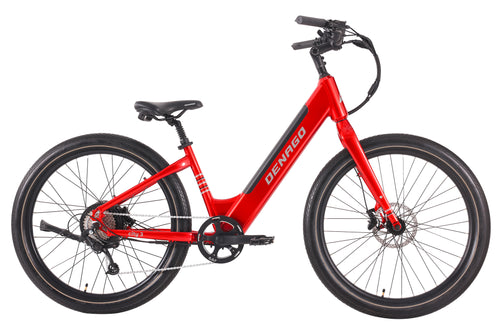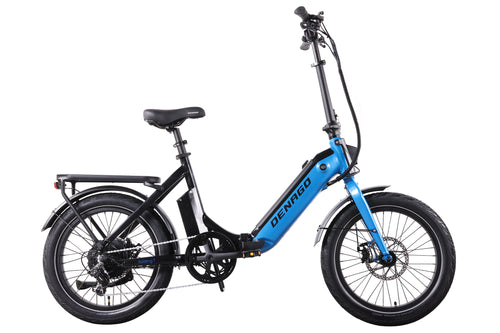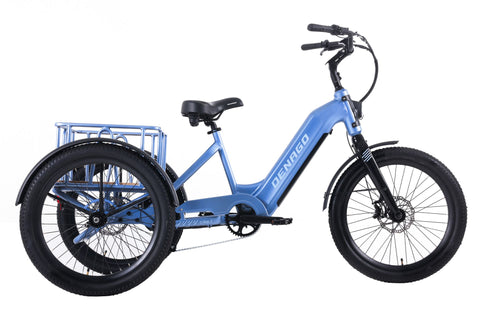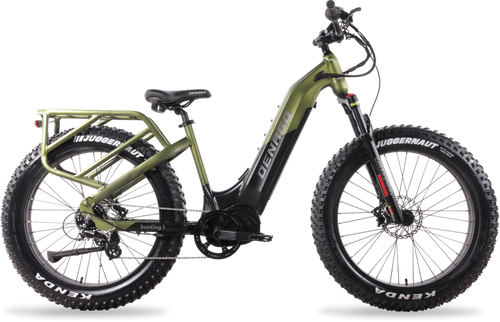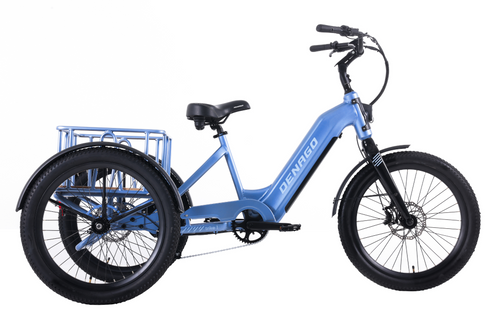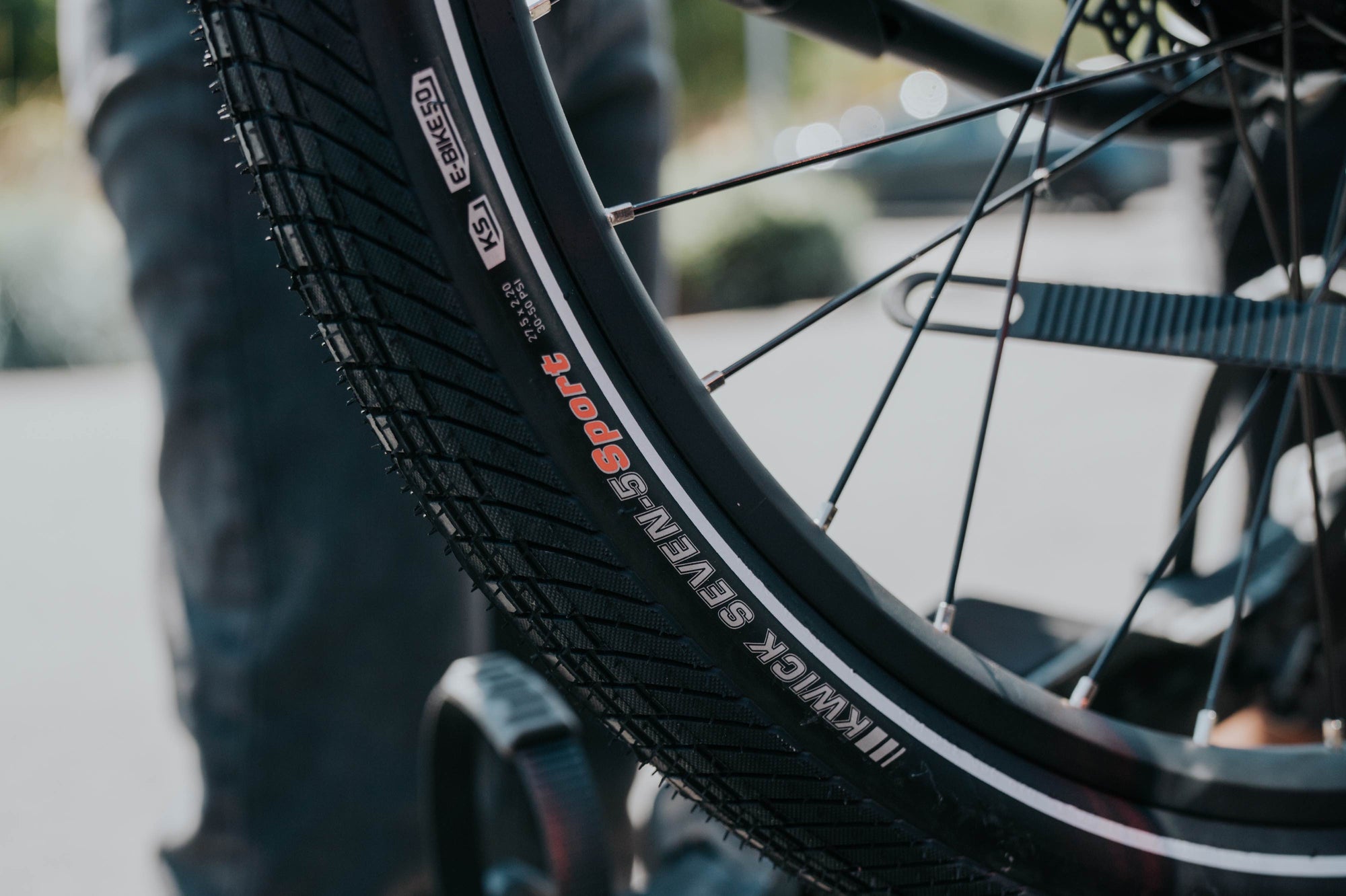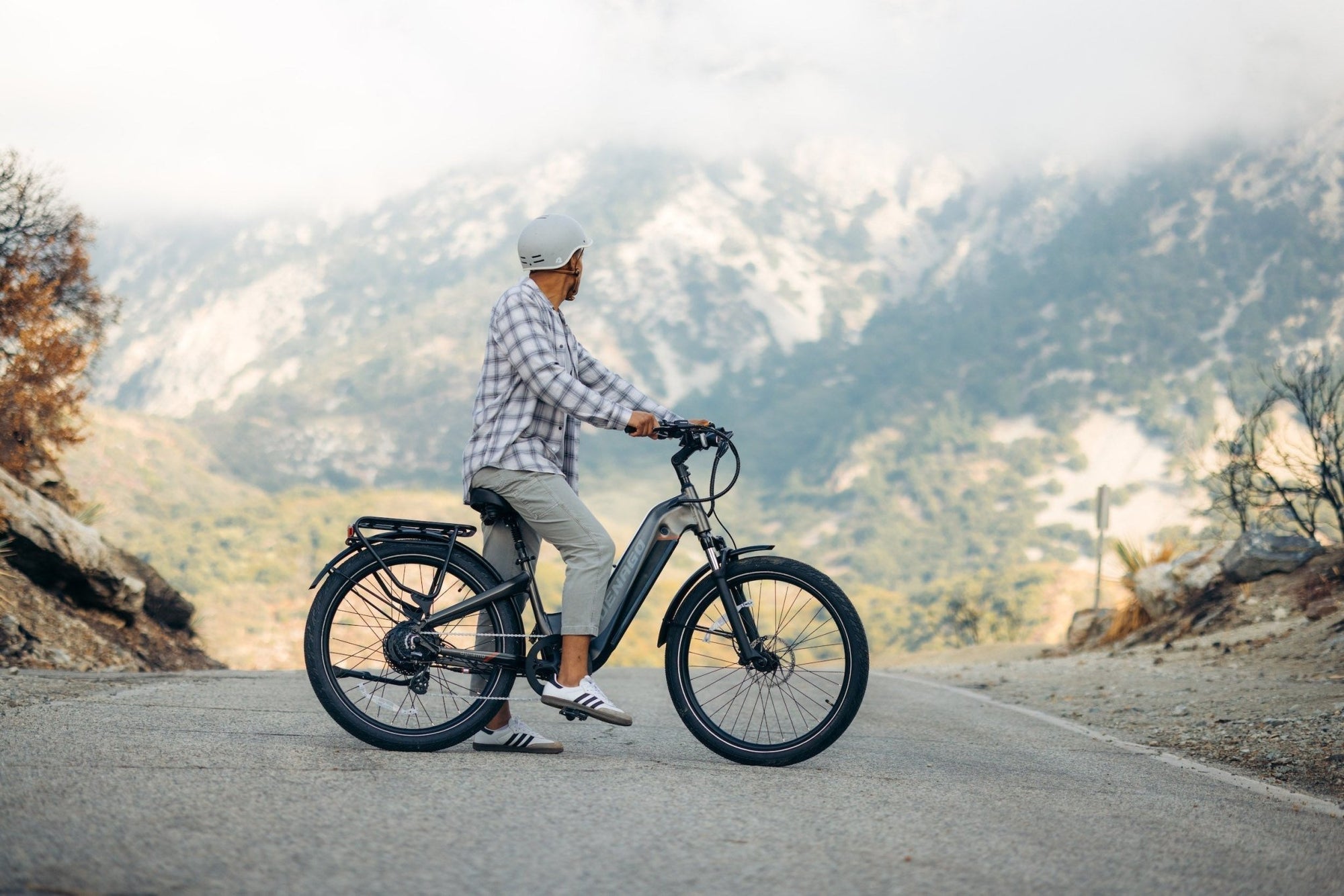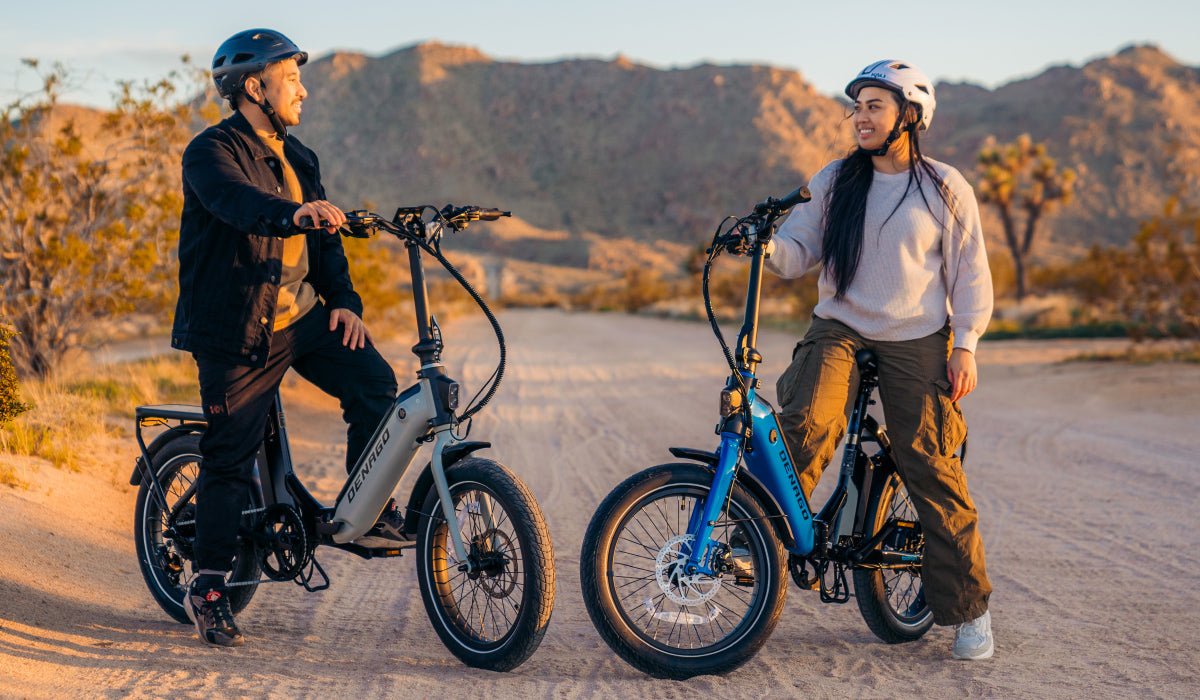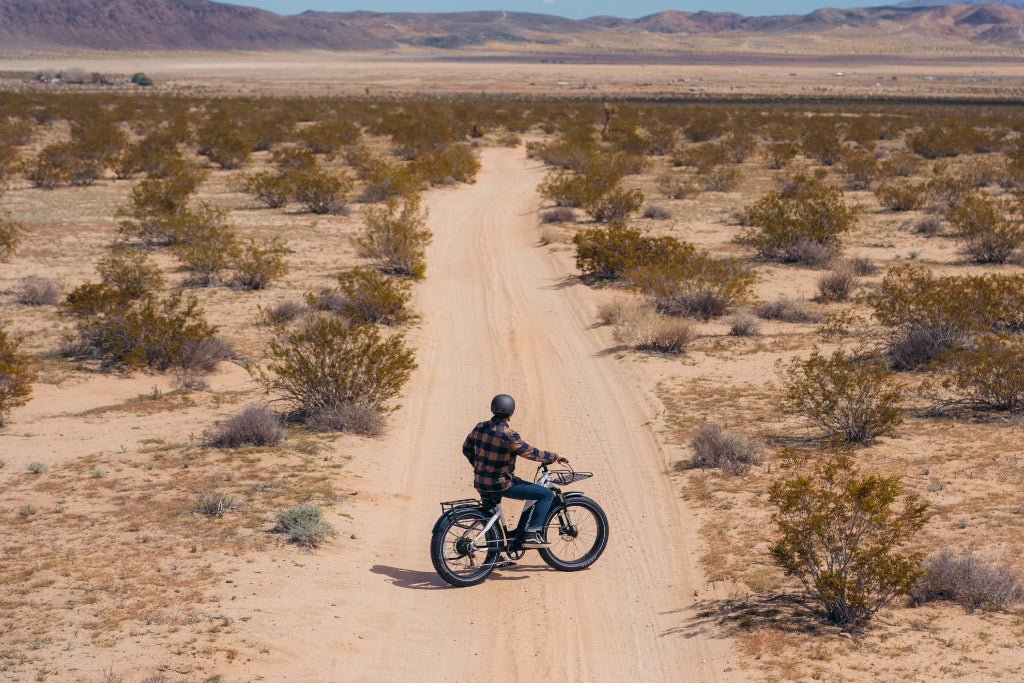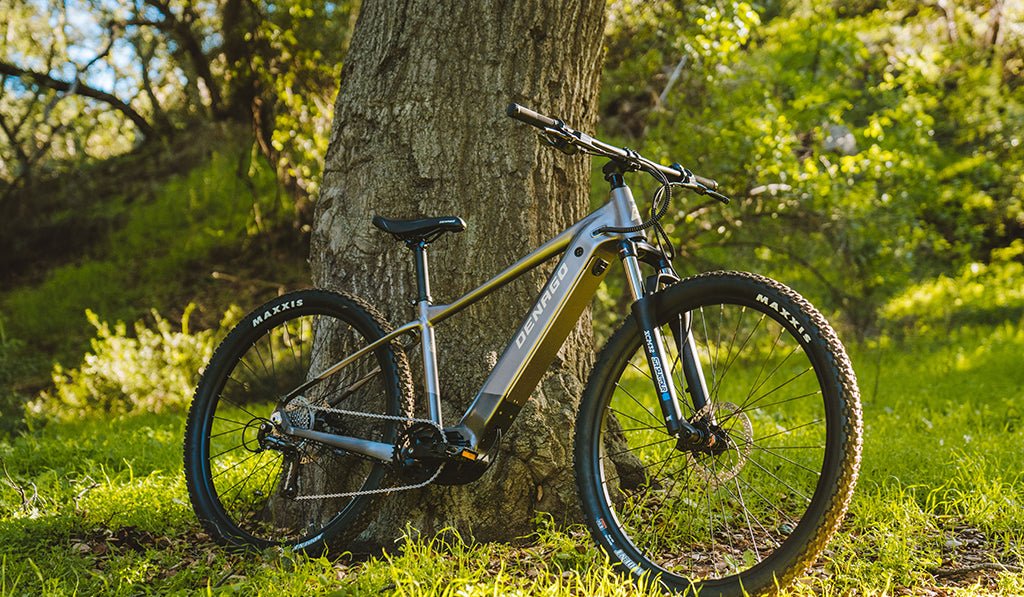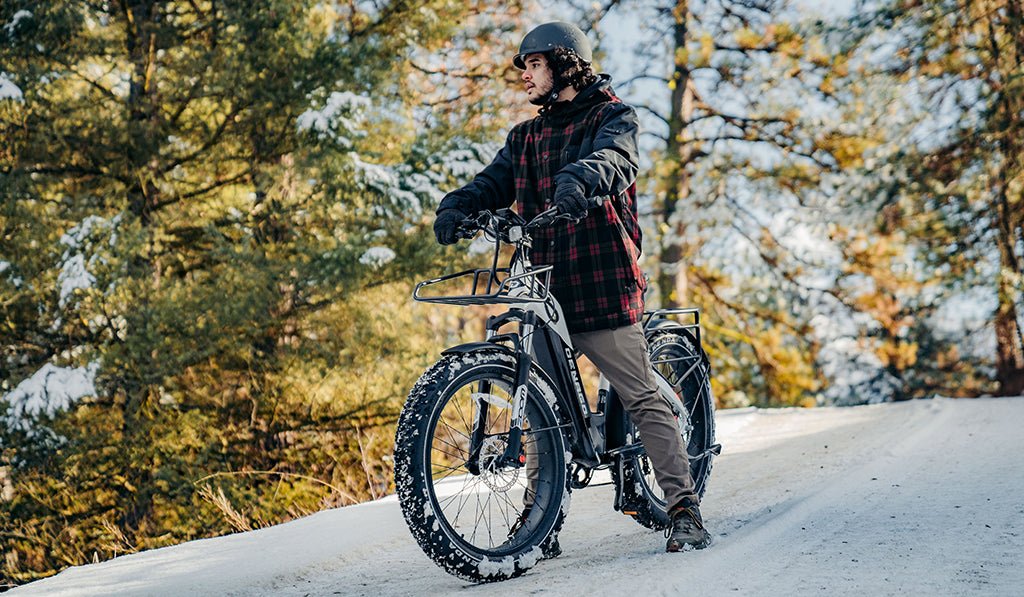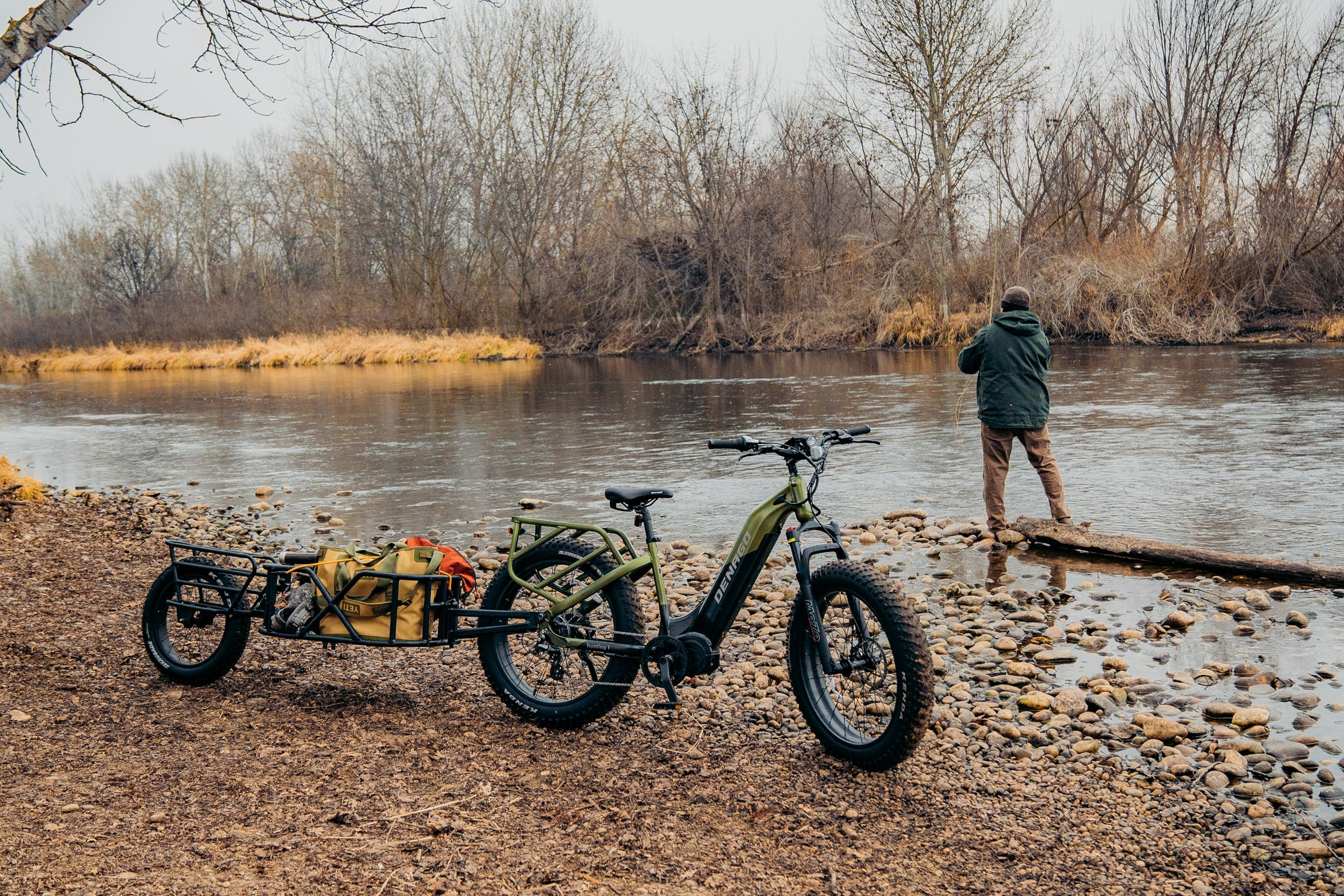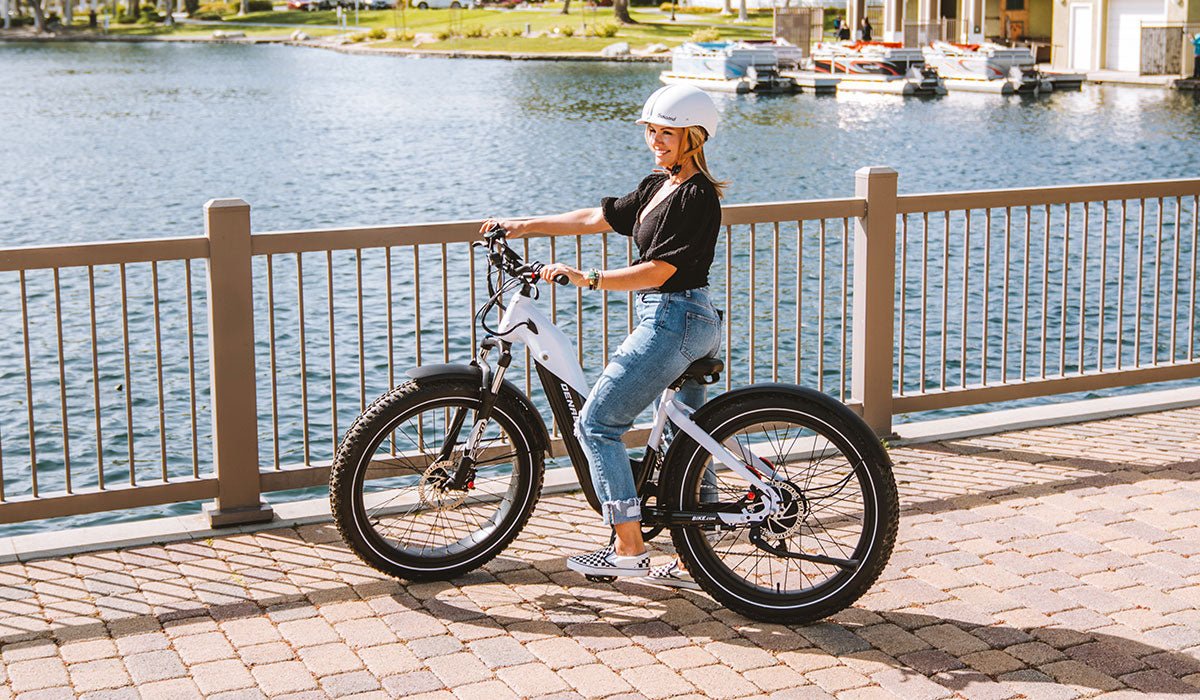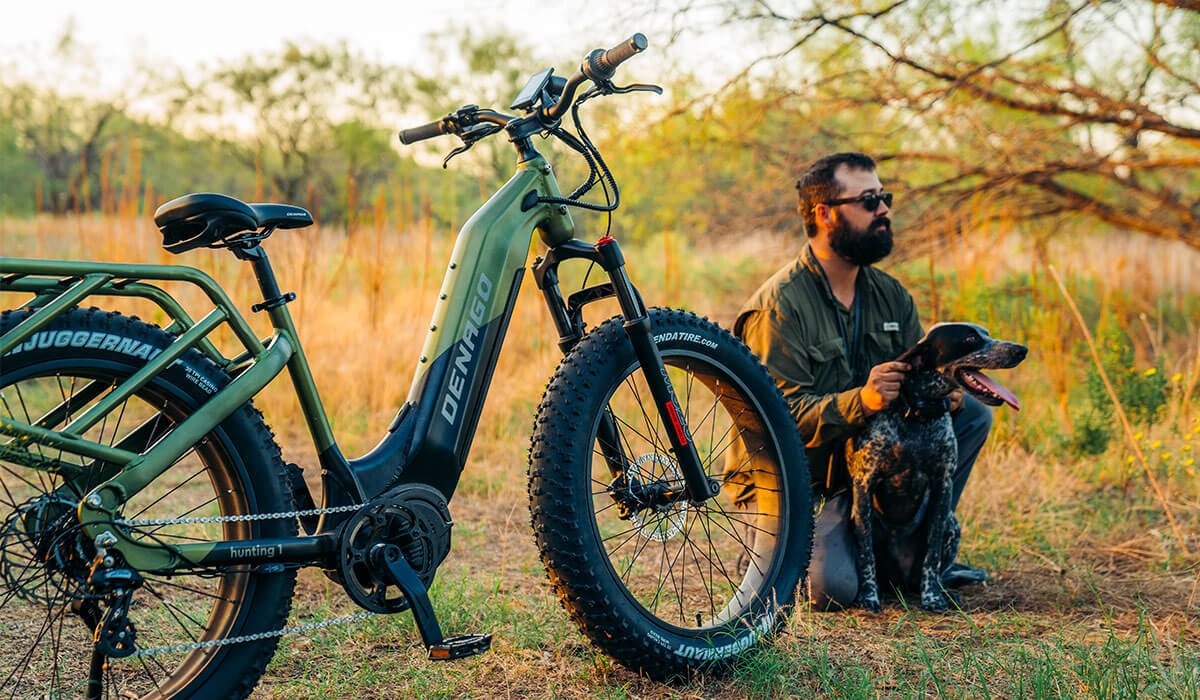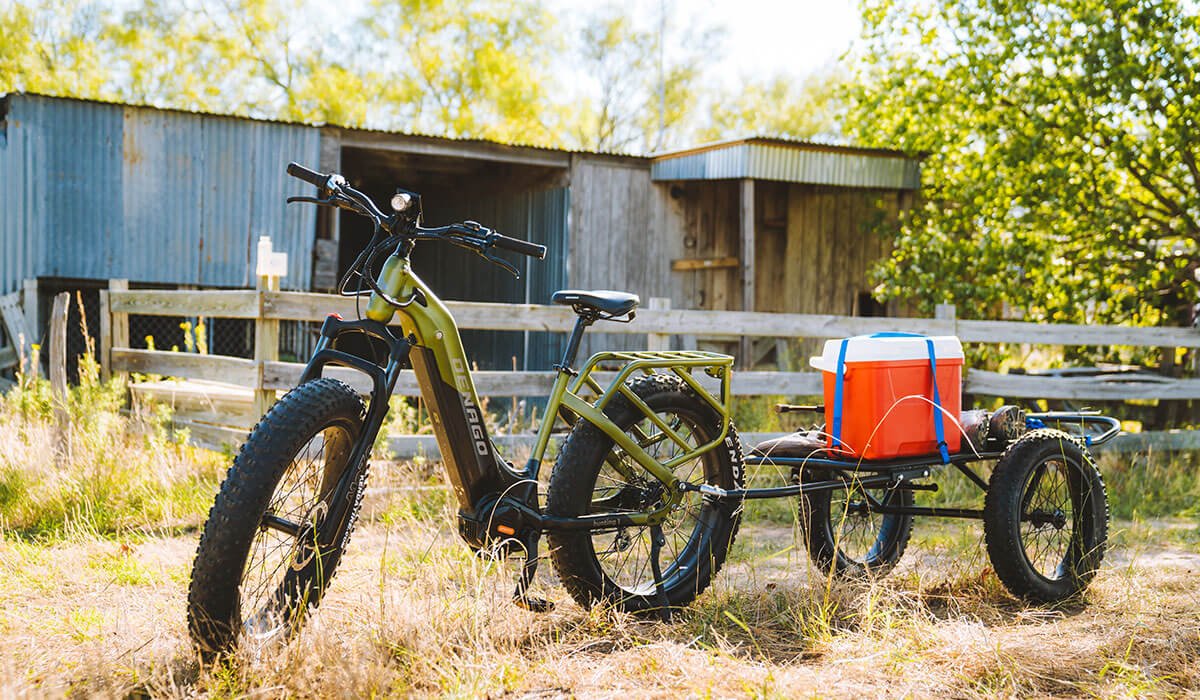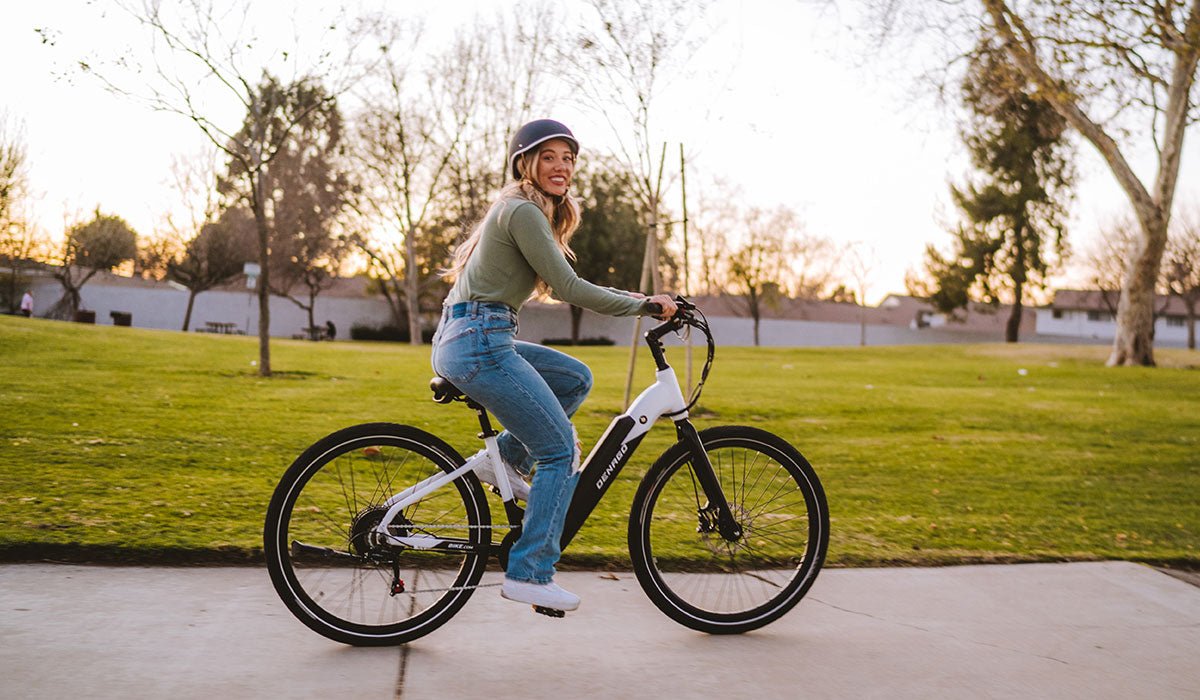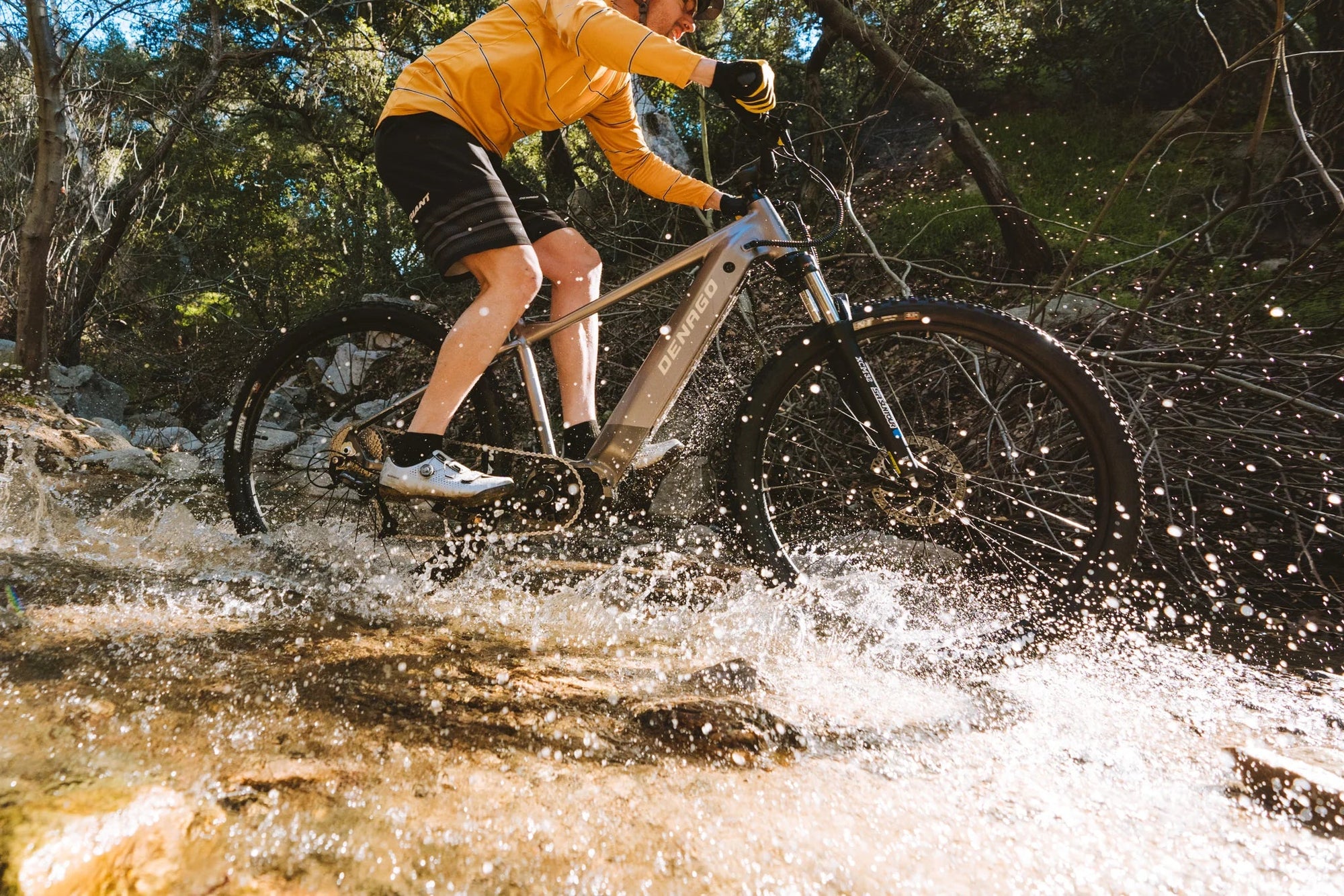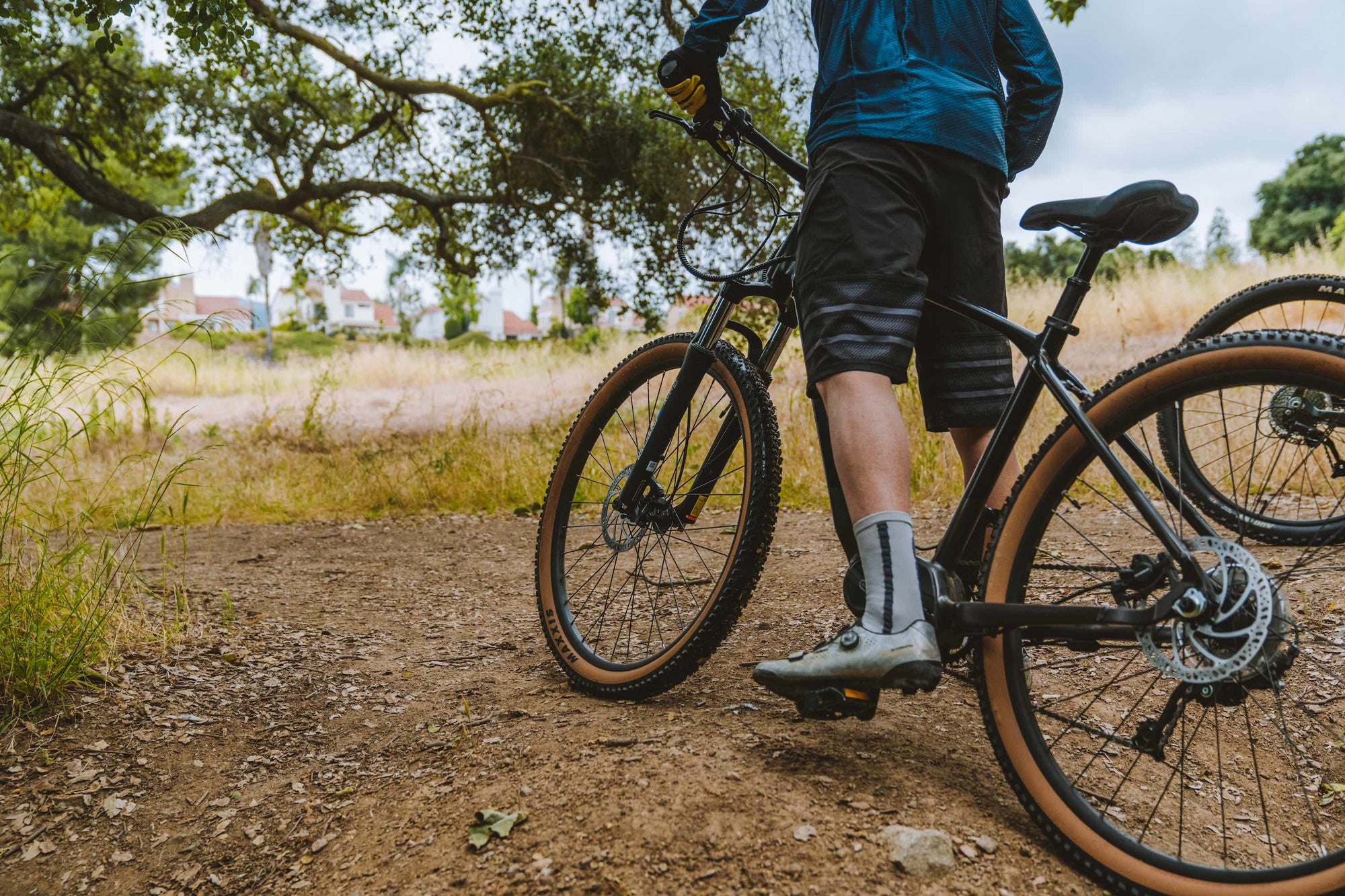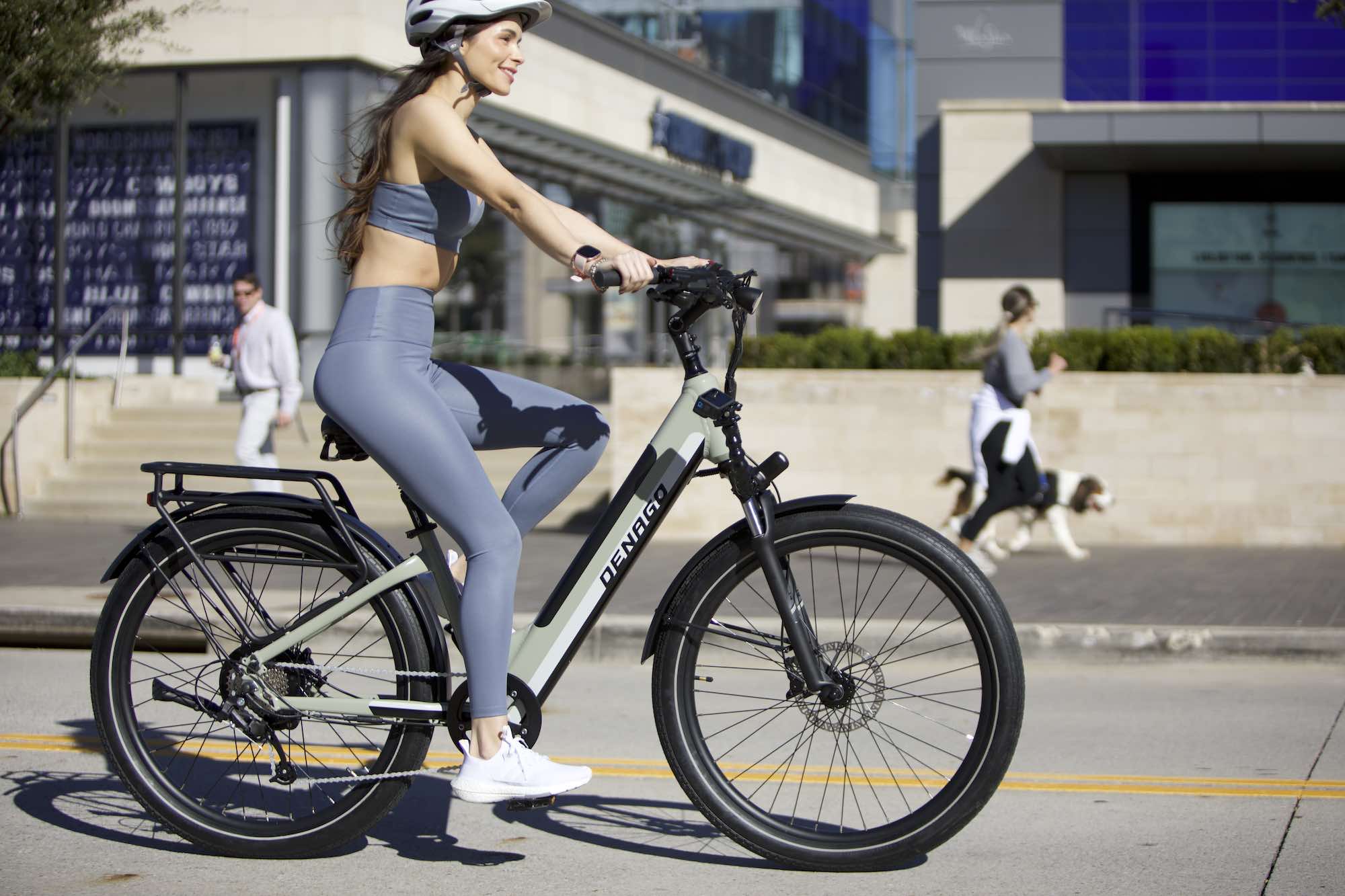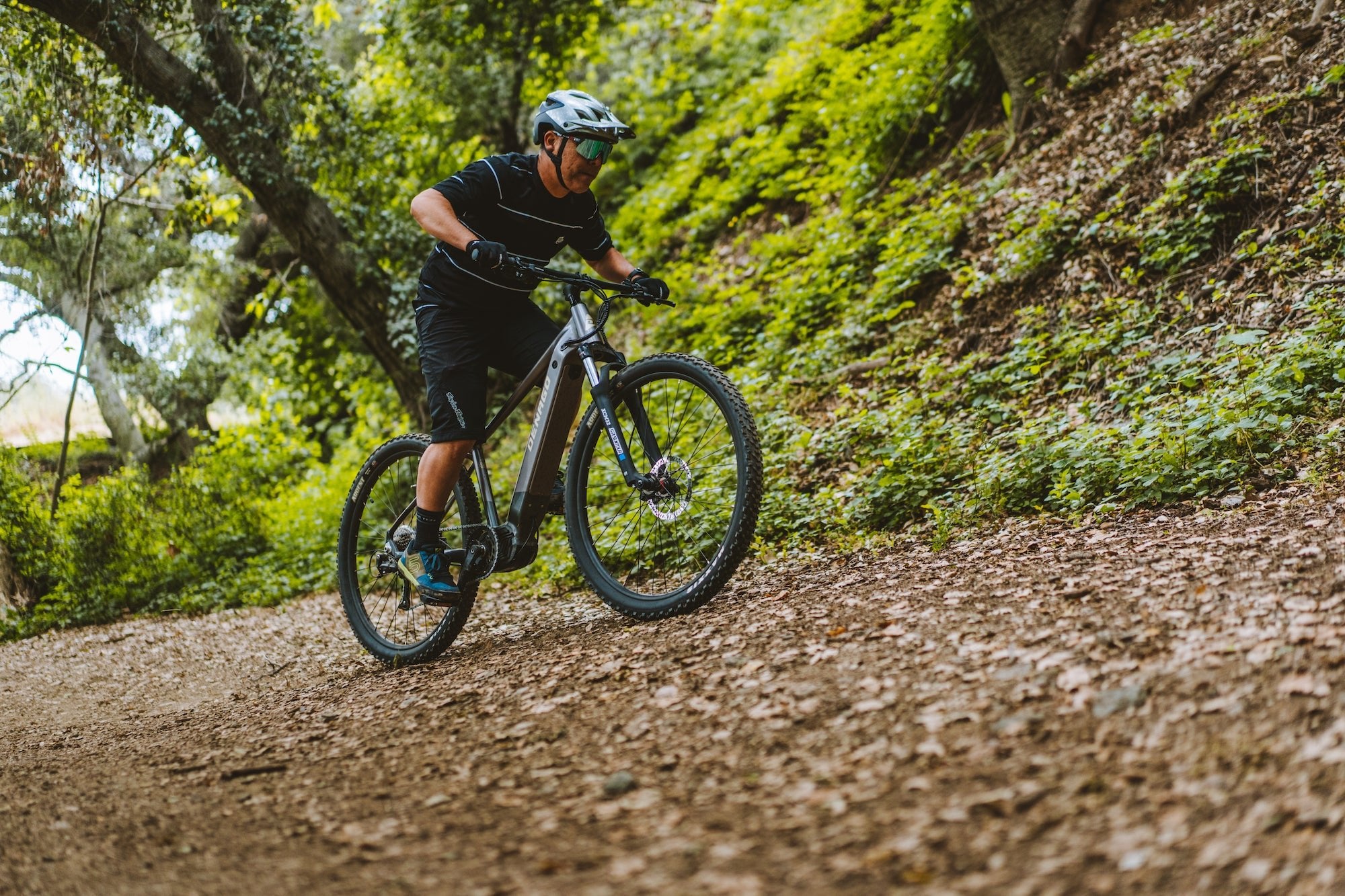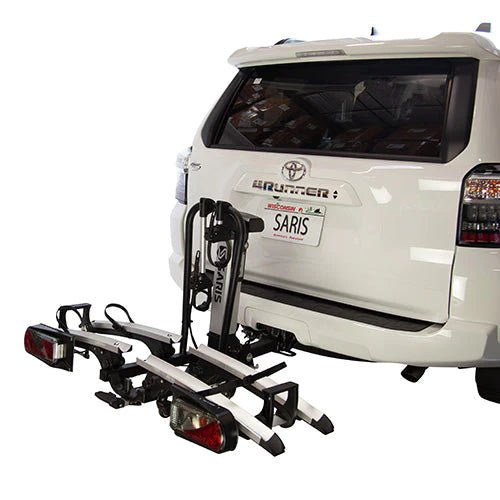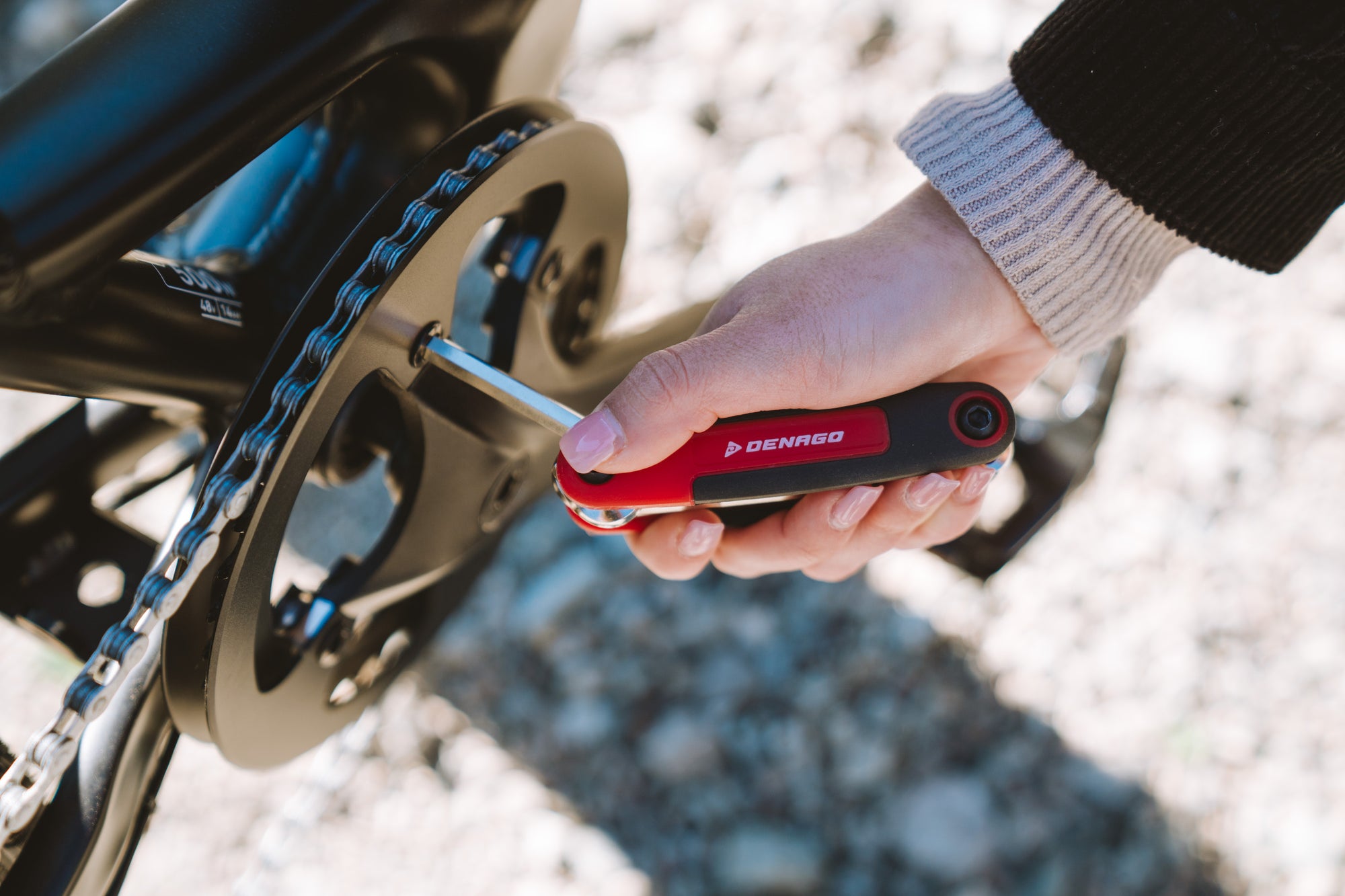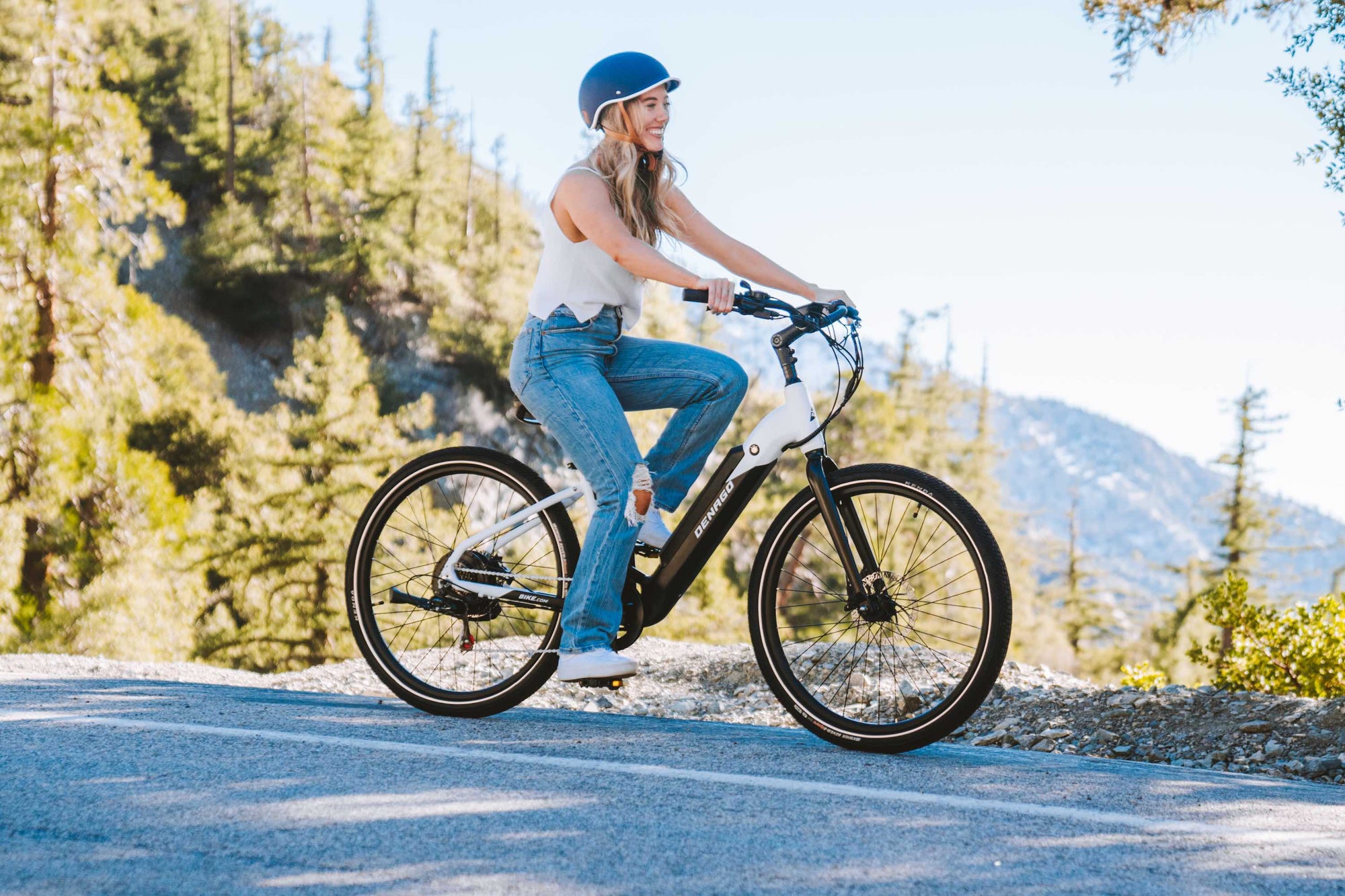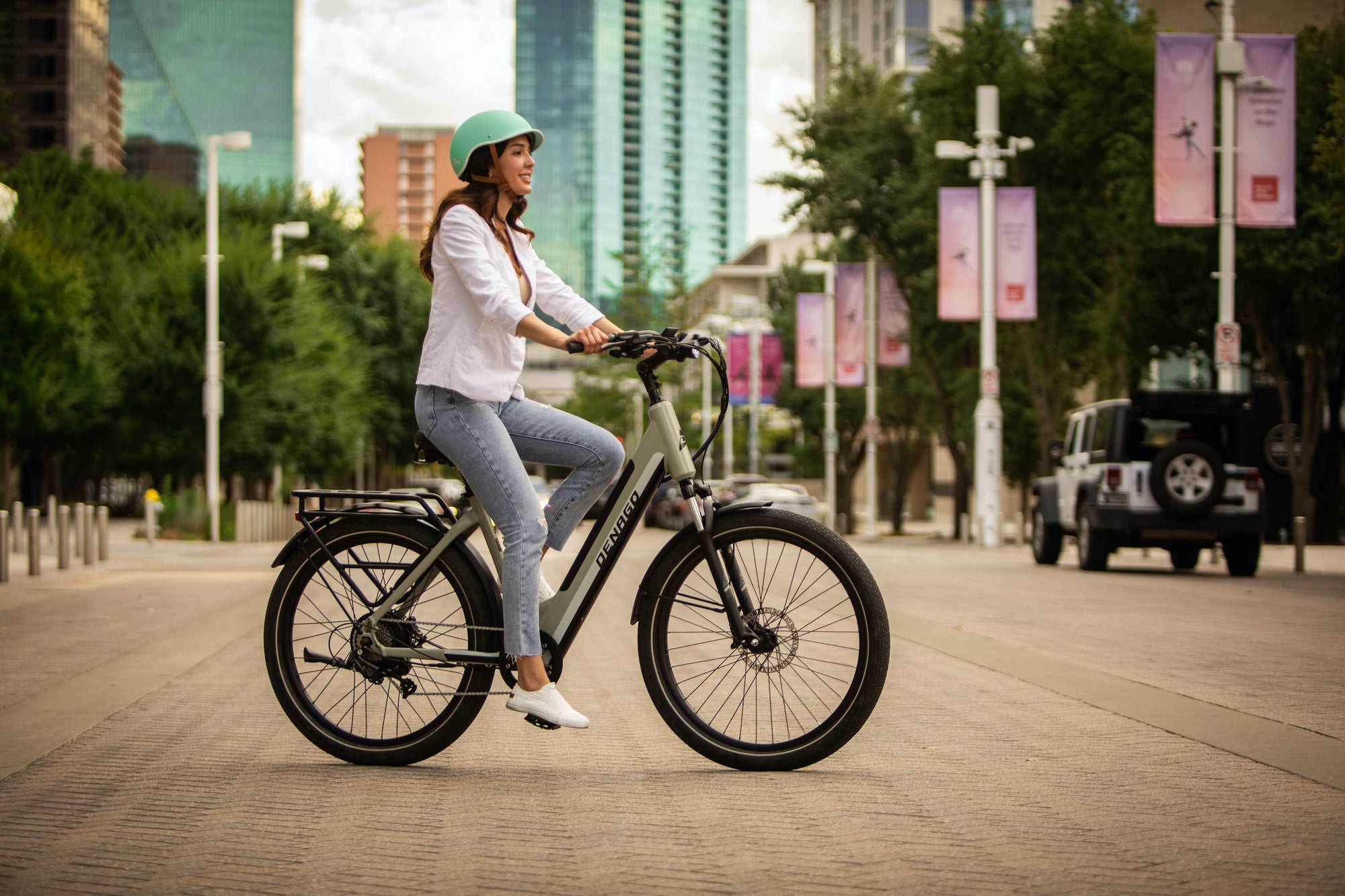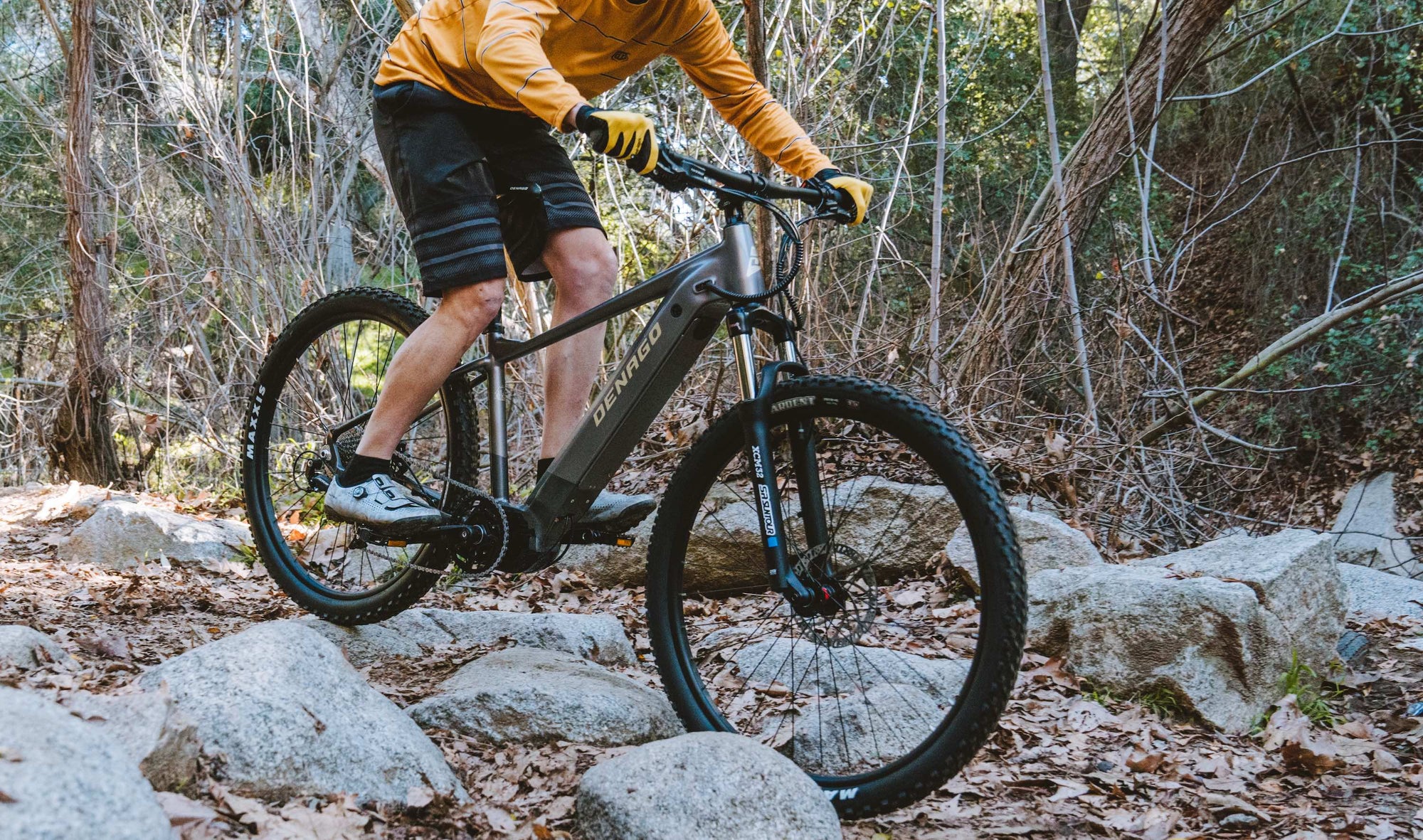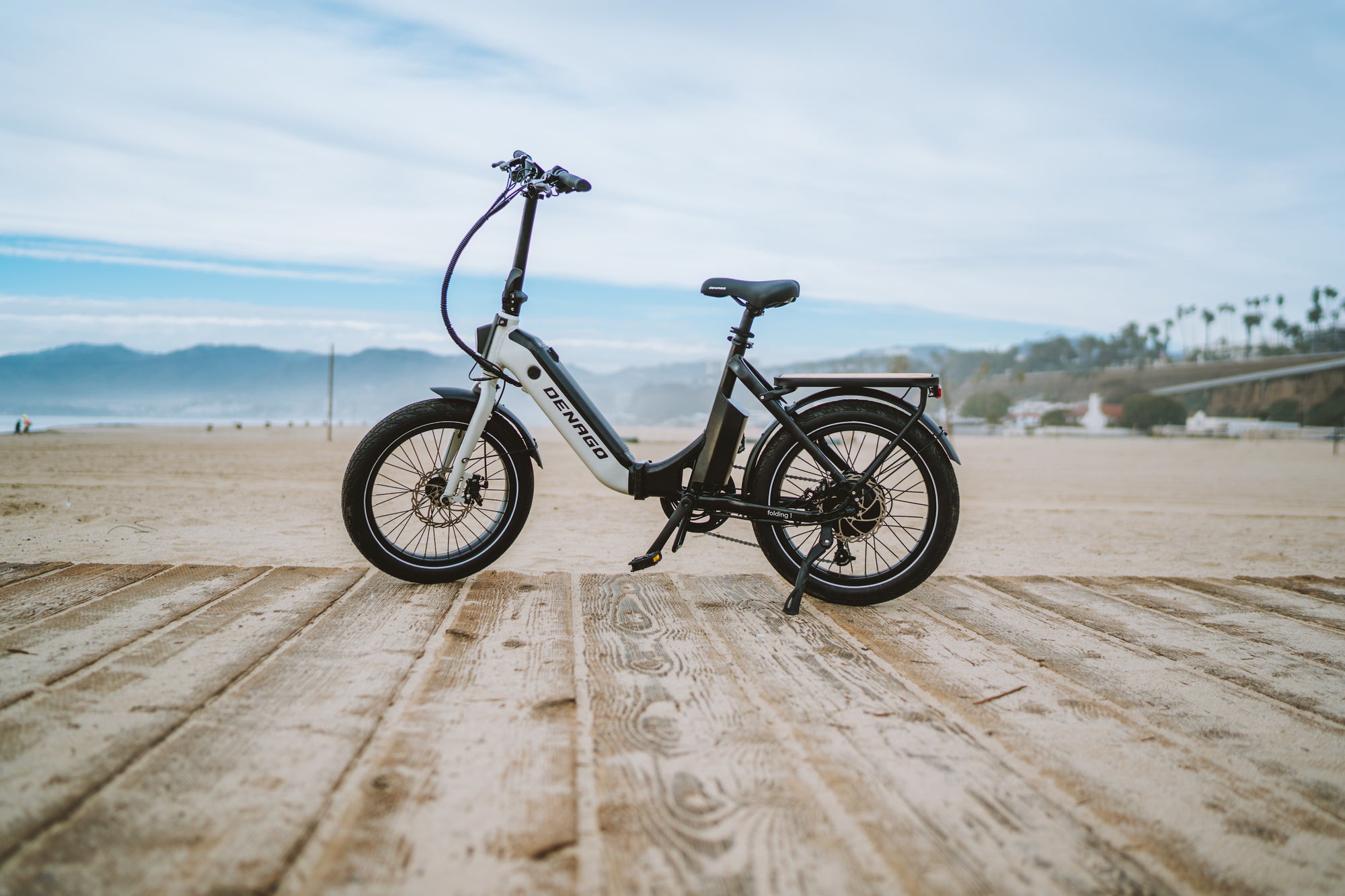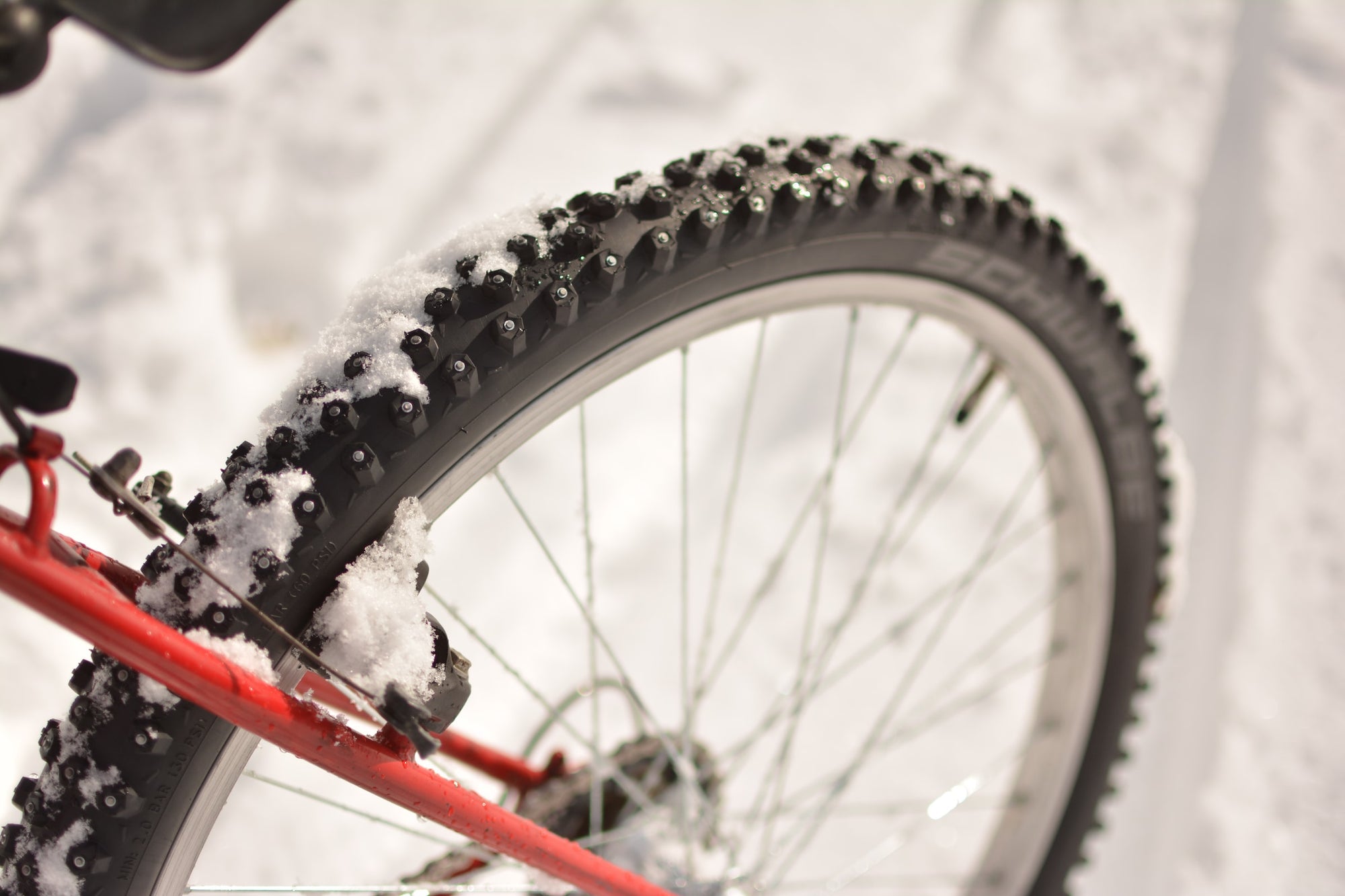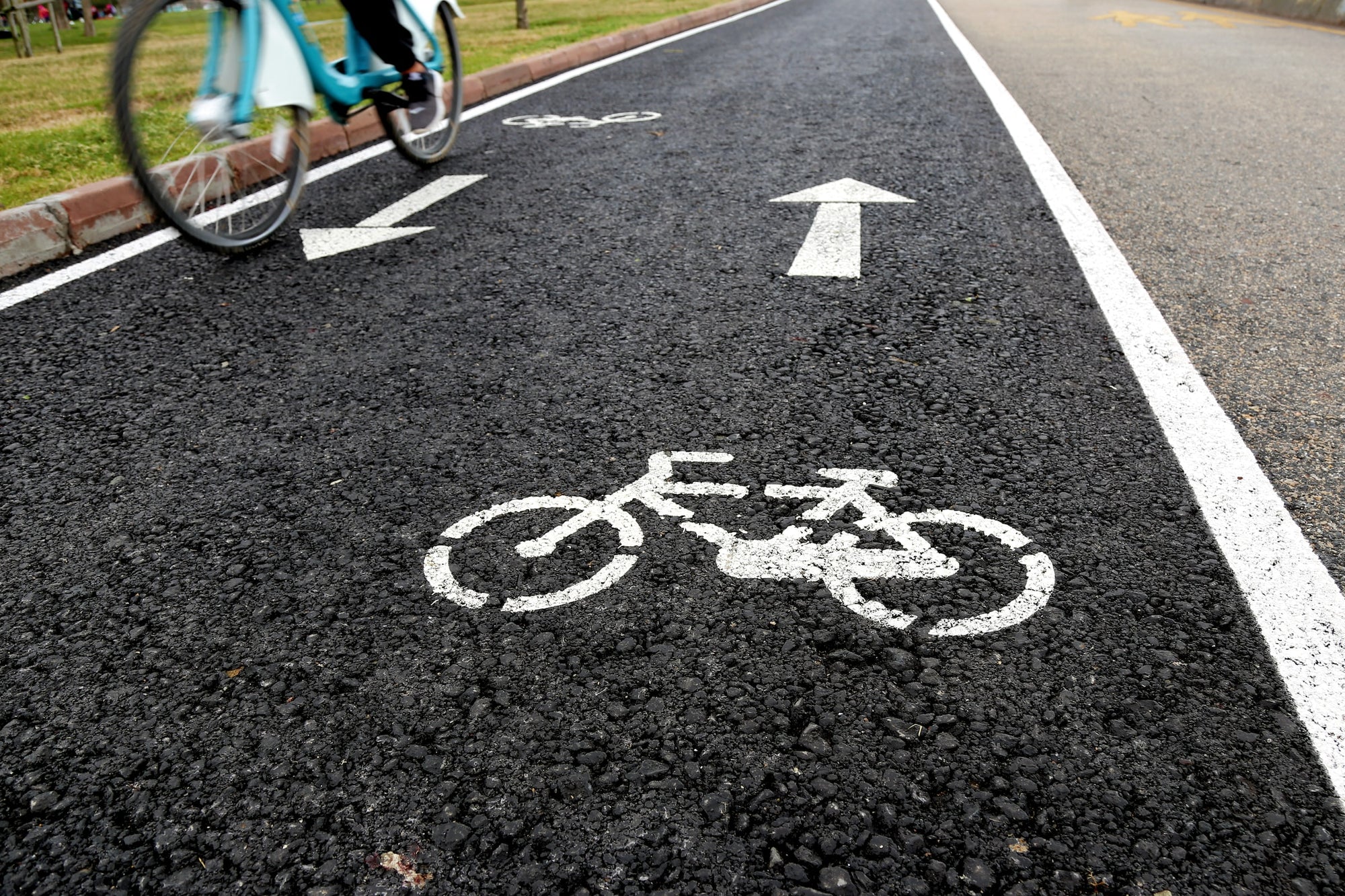The mountain bike wheel has gone through several revolutions (get it?) in its size over the years to arrive at the 29” diameter standard (29er, also sometimes called "700c") that many mountain bikes use today.
In the early days of mountain biking, 26” wheels were the standard as the early mountain bikes were basically modified cruiser bikes with off road tires and flat-ish handlebars. The 27.5” (also called 650B by some brands) wheel has also been in the mix in the last decade, and are currently the second most popular size compared to the front-running 29" wheel.
Compared to the smaller sizes, 29” wheels offer some nice advantages such as the ability to roll over obstacles easier, better traction, a stable ride feel, and carrying momentum well. All of these factors add up to just a better riding mountain bike and electric mountain bike.
In this article we will look at these details that give the 29er a great ride feel. Denago eXC1 and eXC2 electric mountain bikes are designed around the 29" wheel size. Let's take a look at why we made that design choice:
Roll-over capability
With a larger wheel diameter, the angle at which the wheel encounters obstacles is reduced, making it easier to roll over them without getting caught or experiencing jarring impacts. Rocks, roots, and other trail features that might cause smaller wheels to get stuck or lose momentum are navigated more smoothly with 29" wheels.
Increased traction
The larger contact patch of a 29" wheel provides better traction, especially on loose or uneven surfaces. This can be advantageous when climbing or cornering, as the tire has more surface area in contact with the ground.
Another factor that helps with a larger contact patch is using a wider tire and running a lower air pressure. The wider tires have more air volume and when they are run at lower pressures they mold over and absorb rough terrain vs. bouncing over it if the air pressure is too high. If you want to use a wider tire just make sure your bike is designed to work with it. For instance there are 29+ tires that are in the 3” width range but they won't work for all mountain bikes.
A tubeless tire system (Stan’s, Orange Seal, etc.) allows you to run lower air pressure without the concern of pinch flatting an innertube, because there is no innertube. The sealant in the tires also helps with sealing small holes from glass, thorns, tacks, etc. Converting an electric bike to a tubeless system can be a nice upgrade.
Comfort
The increased tire volume on 29" wheels can provide a more comfortable ride by absorbing more of the trail's vibrations and impacts. The tire has more air volume, and more air volume means more shock-absorbing suspension.
Stability
The larger wheels contribute to a more stable ride. The larger wheel diameter helps with maintaining balance and control, particularly at higher speeds or on technical descents. The momentum at higher cornering speeds make the bike feel like it is smoothly arcing into the corner with a stable ride. That can help new riders tackle challenging terrain with a higher degree of confidence.
Improved momentum
29" wheels tend to carry momentum well due to their larger circumference. Once you get them rolling, they maintain speed more efficiently, making them suitable for covering longer distances and maintaining speed over flat or rolling terrain.
When 27.5” Wheels Make Sense
29” wheels are great, however, it's important to consider when a 27.5” wheel would make sense.
Agility: Smaller wheel sizes, like 27.5", can offer more agility and maneuverability, which can be preferable for certain types of trails and riding styles, such as technical and tight singletrack.
Acceleration: Smaller wheels can accelerate more quickly due to their lower rotational mass. This can be advantageous in situations where frequent changes in speed are required. City and commute bikes, for example, often use the 27.5" wheel size, so they can accelerate a little faster, like from a stoplight.
Frame Geometry: The larger wheels can influence frame geometry, potentially affecting factors like standover height and handling characteristics. Manufacturers have adapted to this, but personal preferences still play a role. 27.5" can be helpful for very short riders, because it can be hard for the geometry of a bicycle frame to accommodate the very large 29" wheels and a very short rider at the same time.
What About 26” Wheels?
These days it can be tough to find a new 26” wheel mountain bike. There are some out there for smaller riders, but for the most part the bike industry offers 29” or 27.5” wheel mountain bikes.
One key exception where the 26" wheel and tire lives on is fat tire bikes, and especially fat tire eBikes. 26" is still the dominant diameter used on this style of bike with 4" or 5" wide fat tires, with the vast majority of "fat" wheels, rims, tires, and tubes being offered in the 26" diameter.
Rolling On with Big Wheels
As you can see there was a good reason for mountain bikes and electric mountain bikes to go with the 29” wheel size. They make a mountain bike ride that much better with the ability to roll over obstacles well, improve overall traction and stability, all while providing a more comfortable ride.
Enjoy your rides!
-Pete




